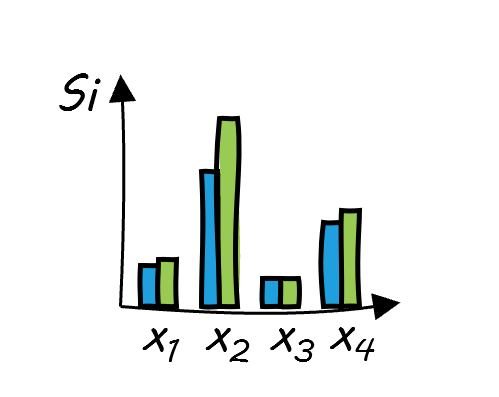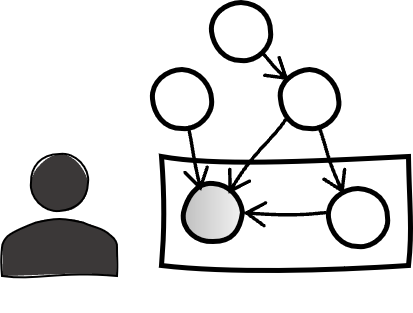3.1. UQ: Uncertainty Quantification
The UQ tab is the panel where users select the UQ Engine for uncertainty quantification calculations. The UQ Engine encompasses algorithms for various uncertainty analysis and optimization problems.
The UQ Engine options currently available are Dakota, SimCenterUQ, and UCSD-UQ. Users can also configure quoFEM app to use their own UQ methods and algorithms in the quoFEM app workflow by selecting the CustomUQ option.
3.1.1. UQ Features At-a-Glance
▪ Forward Propagation in SimCenterUQ Example▪ Multi-fidelity Monte Carlo in SimCenterUQ
▪ Global Sensitivity Analysis in Dakota Example
▪ Reliability Analysis in Dakota Example
▪ Bayesian Calibration in Dakota
▪ Gradient-free Parameter Estimation in Dakota
▪ Probabilistic Learning on Manifolds (PLoM) in SimCenterUQ
▪ Configuring CustomUQ Engine in CustomUQ engine Example
3.1.2. Dakota UQ Engine
This UQ engine utilizes the Dakota Software, a state-of-the-art research application that is robust and provides many methods for optimization and UQ, a selection of which we utilize in this application. Dakota provides the user with several methods for different kinds of analyses. For this reason, we have divided the methods into categories through a pull-down menu, as shown below. Once the category has been selected, a few different methods are made available to the user.
By checking the
Parallel Execution, the UQ analysis will be performed in parallel. It will try to use all the processors available on the machine.By checking the
Save Working dirs, individual working directories will be saved in the Local Jobs Directory. Local Jobs Directory is defined atFile-Preferencein the menubar. Otherwise, individual simulation files will be deleted after each simulation run. Users might uncheck this box when a large number of simulations is requested, to manage driver space.

Fig. 3.1.2.1 Dakota engine and category selection.
The following categories are available:
3.1.3. SimCenter UQ Engine
The SimCenterUQ engine is a UQ engine developed in-house at the SimCenter that accommodates different UQ methods, which are organized into categories that can be accessed through a pull-down menu, as shown below:

Fig. 3.1.3.1 SimCenterUQ engine and category selection.
The following category options are available:
3.1.4. UCSD UQ Engine
The UCSD-UQ engine is a module developed at the SimCenter in collaboration with UCSD. It provides algorithms for Bayesian estimation, which can be accessed through a pull-down menu, as shown in Fig. 3.1.4.1.

Fig. 3.1.4.1 UCSD-UQ engine and category selection.
This module currently offers support for Bayesian estimation of the parameters of a traditional (non-hierarchical) model using the Transitional Markov chain Monte Carlo (TMCMC) algorithm and of a hierarchical model using an adaptive Metropolis-within-Gibbs sampling algorithm.
3.1.5. Custom UQ Engine
The CustomUQ option enables users to switch out the UQ engine in the quoFEM app workflow such that different methods and tools can be applied within the SimCenter framework with minimal effort on the part of the user. The CustomUQ option can be accessed as shown below:

Fig. 3.1.5.1 CustomUQ engine selection.
In order to use the CustomUQ engine option, two steps are required:
Configuring the UQ tab to accept the required inputs
Adding UQ engine to customized UQ backend
These steps are described in more detail here:
3.1.6. Video Resources
Recorded in tool training, 2022.






